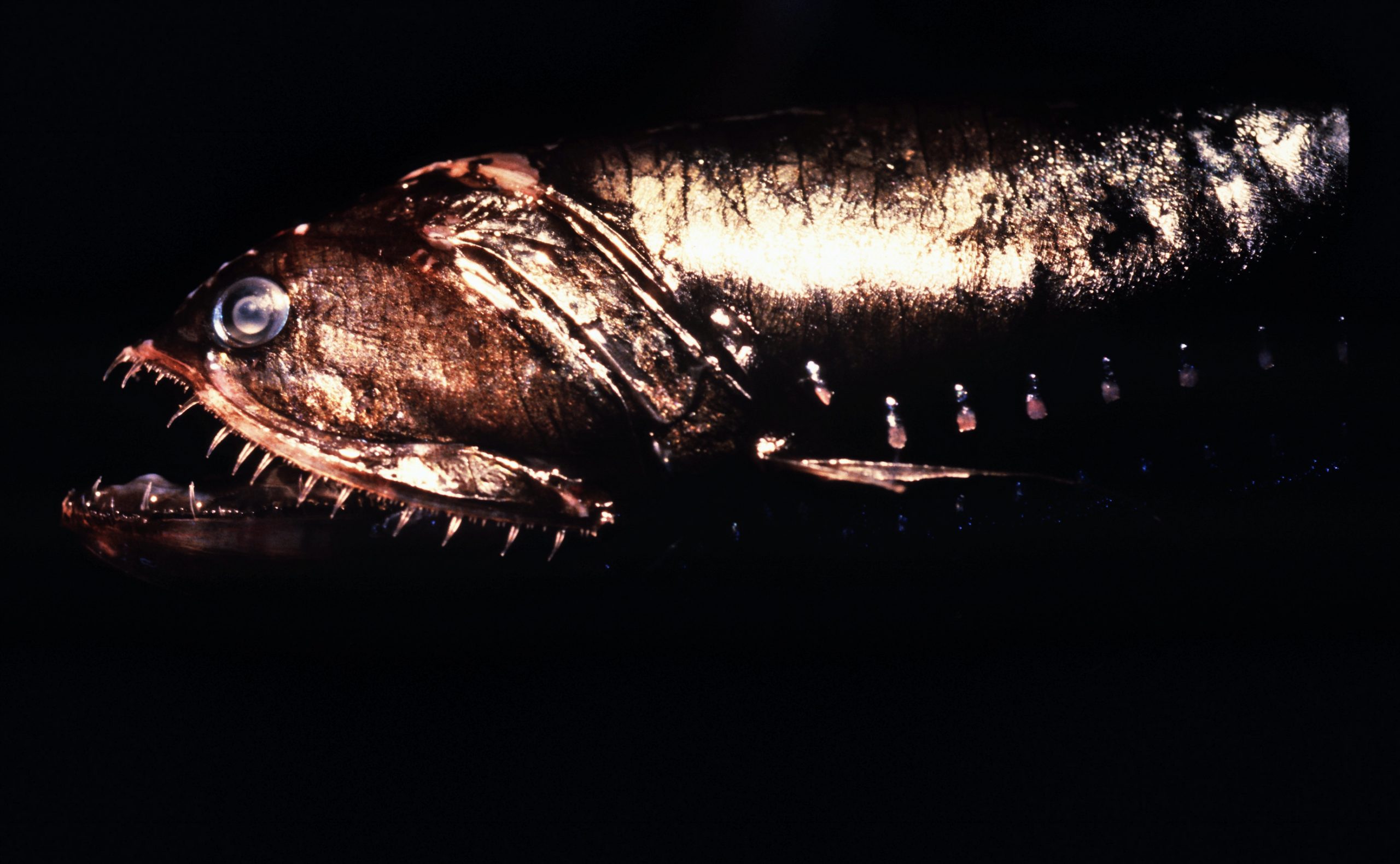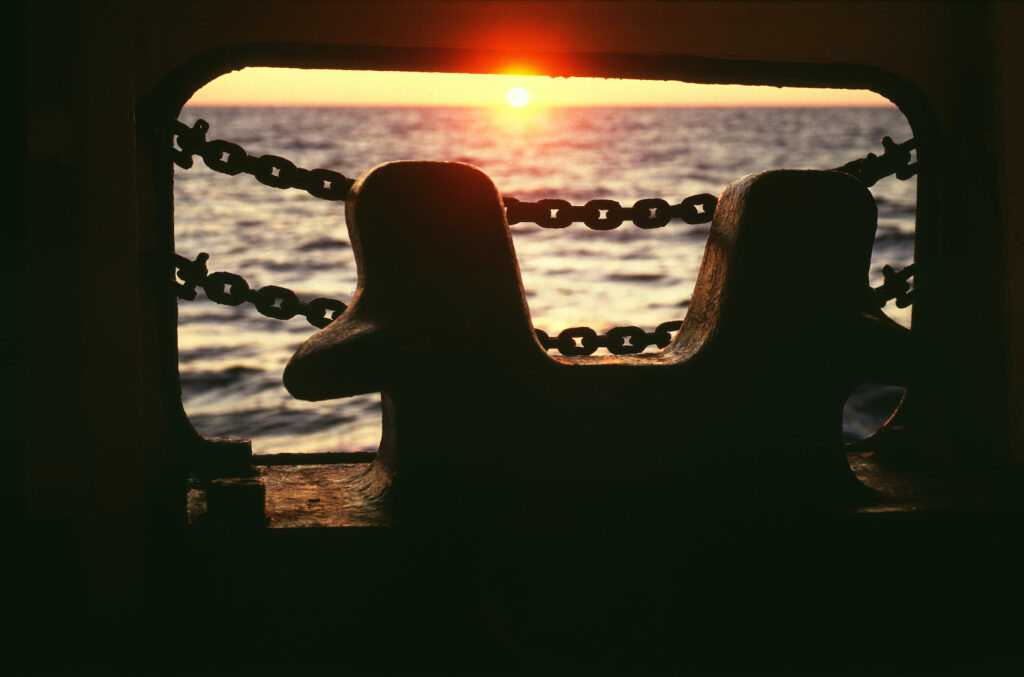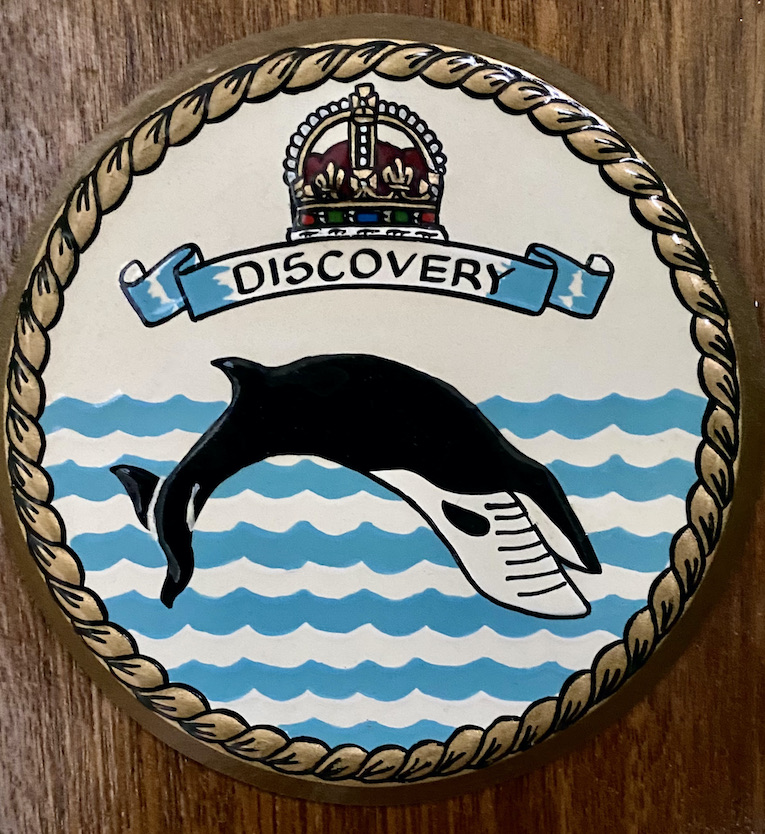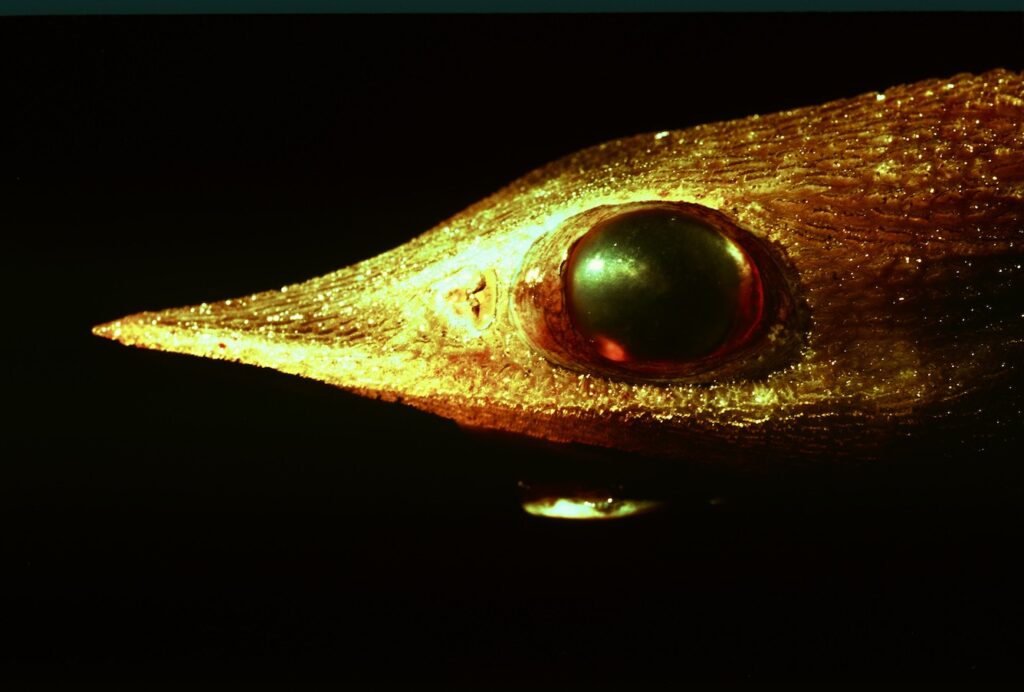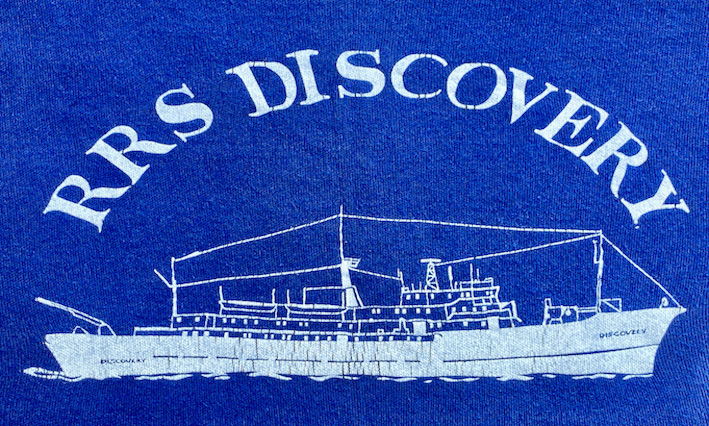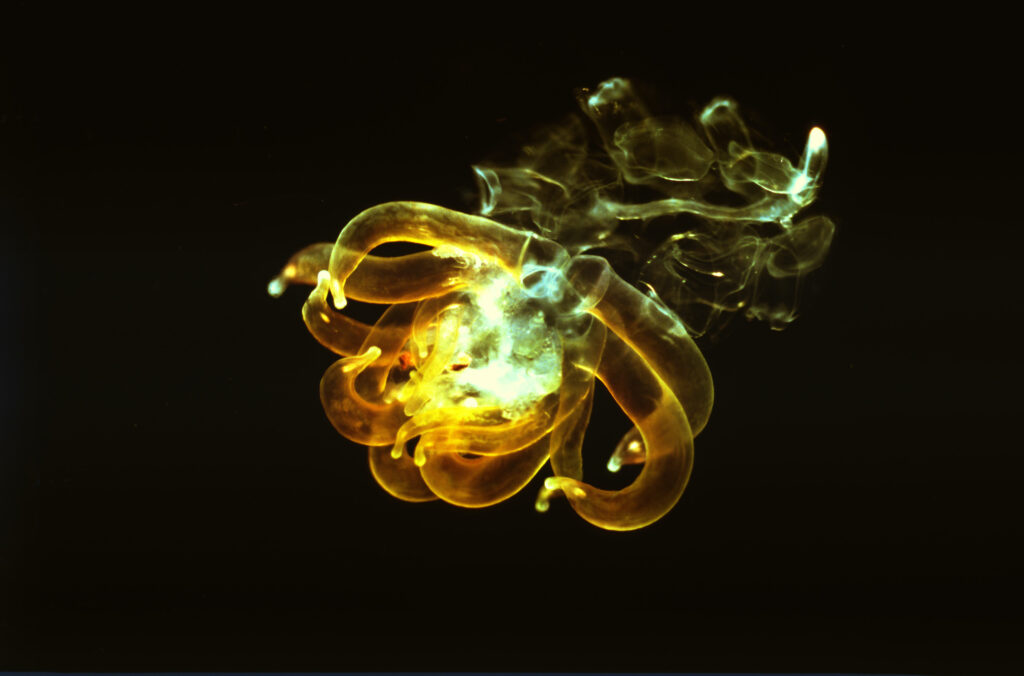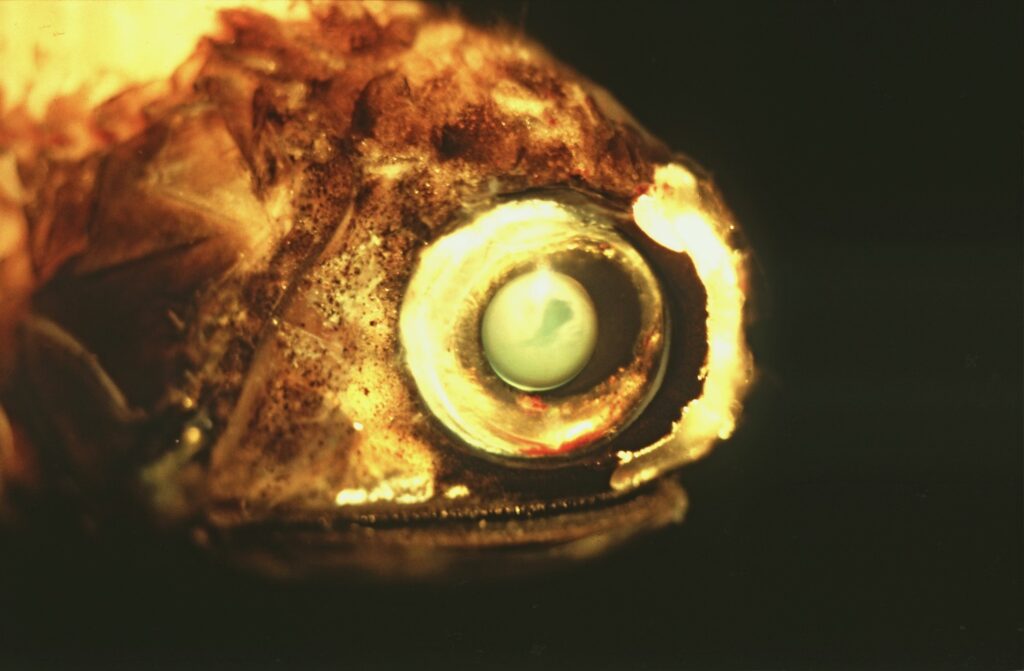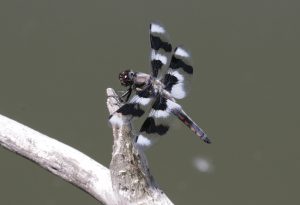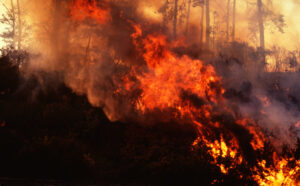So, I got this phone call — it was a while ago now, but I don’t mind looking back if things are interesting. The spider I was filming at the time certainly wasn’t… Spiders don’t do anything on demand and by comparison the telephone conversation seemed promising. It was from BBC Natural History Unit producer Roger Jones offering me the boat trip of a lifetime on his three part series ‘Atlantic Realm‘ — he was just so enthusiastic… but then he didn’t have to go.
It was a research vessel… I imagined a rusty old ship; I’d be the odd fish out in a shoal of scientists. My bunk would be next to the engine which would thump away pumping out noxious fumes… It would be a miserable experience. And in fairness I was right about most of that.
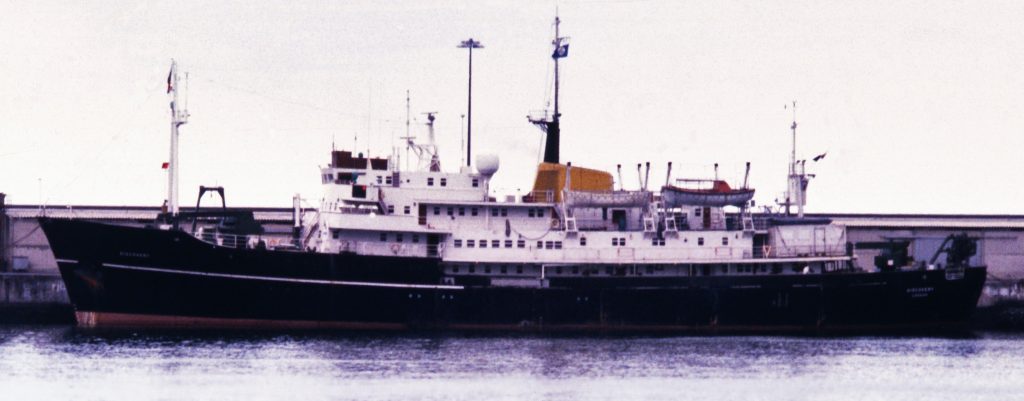
‘We really want you to do it.’ said Roger — maybe this was code for, ‘Nobody else wants to.’… because I wasn’t convinced that RRS Discovery Cruise 168 was an opportunity not to be missed? Few people had attempted to film creatures — dragged from the ocean depths, in tanks on a rocking boat… That was the job: I would get closer than was possible in a deep sea submersible, and could light subjects in an interesting way… but would the fish be alive enough to warrant the effort. I had my doubts as the pressure changes would be extreme.
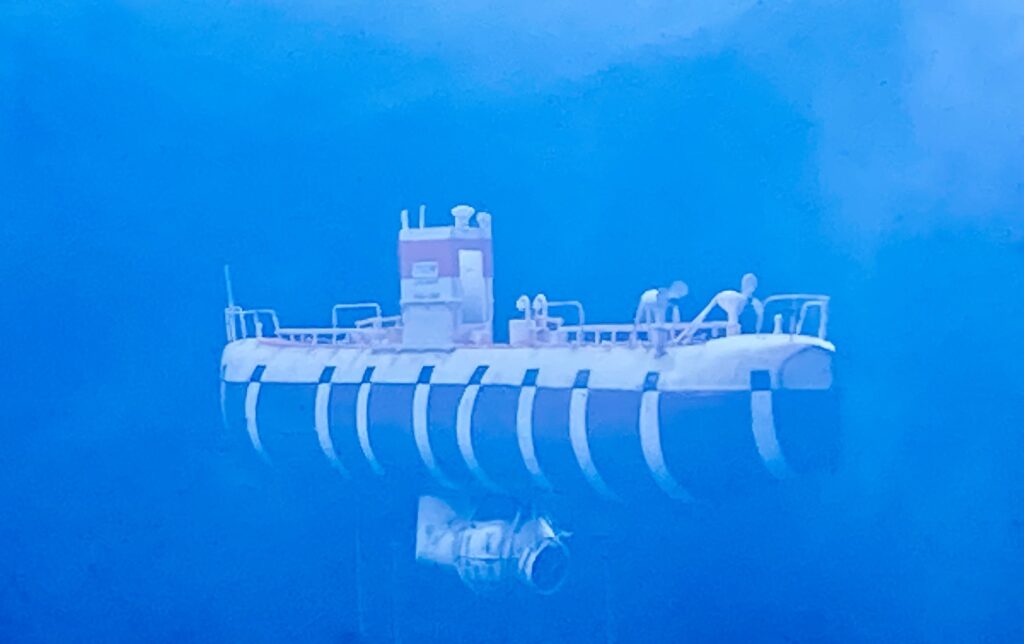
I find it soothing to watch fish swim, but didn’t imagine my deep sea subjects would be doing much of that — they’d mostly be dead or dying, and that wasn’t very appealing. I had a tank of pregnant seahorses set up in my studio, and if I went I’d miss the births, but as this was for the same project, it was a question of priorities rather than a conflict of interests.
I doubted anybody else could do this job at short notice; but to take it on was to risk an expensive flop (fish pun intended). All in all, it was a potential career ender; but I was getting bored with the spider now — she still wasn’t doing anything — creatures from the deep seemed suddenly more interesting, and I rashly agreed to take the job.
Production usually sends enough scientific bumph about film subjects to paper a hallway… but not this time. I had two written sides of A4 with instructions on glass tank sizes, and when production prioritises that, you know you’re in trouble. There was no helpful behavioural advice… a sure sign that little was known about the creatures coming up from the deep. At surface level I was certain none of my subjects would be in great shape, and I would need to devise convincing scenarios to the contrary.
If my father hadn’t died in 2021, I probably wouldn’t be writing ancient history. We had lived the last 20 years on different continents, and organising a funeral at a distance during a Covid epidemic proved challenging. As a distraction I began sorting through my old pre-digital images, none of which I’d examined closely before.
Starting randomly on boxes labelled June 1987, filled me with enthusiasm — I had been photographing racing cars… in particular Derek Bell winning the Le Mans 24 Hour Race in a Porsche… I’d gone specifically to see Jaguar do this, but it wouldn’t happen for another year. The day after the race I spoke with Derek: he told me he usually enjoyed driving the Mulsanne Straight (this involved around minute travelling at more than 240 miles an hour), but this year there was a rattling windscreen held in place by duct tape, so it wasn’t quite so much fun. This wasn’t the sort of thing that would happen for very much longer. In 1990, to improve safety, two chicanes went into the Mulsanne’s 6K length (previously the longest straight section on any racetrack in the world) and this would make Le Mans a slightly different race. Some drivers liked it the way it was — Derek said that driving down the straight at night was a chance to relax, but then he always was a rather exceptional racing driver.

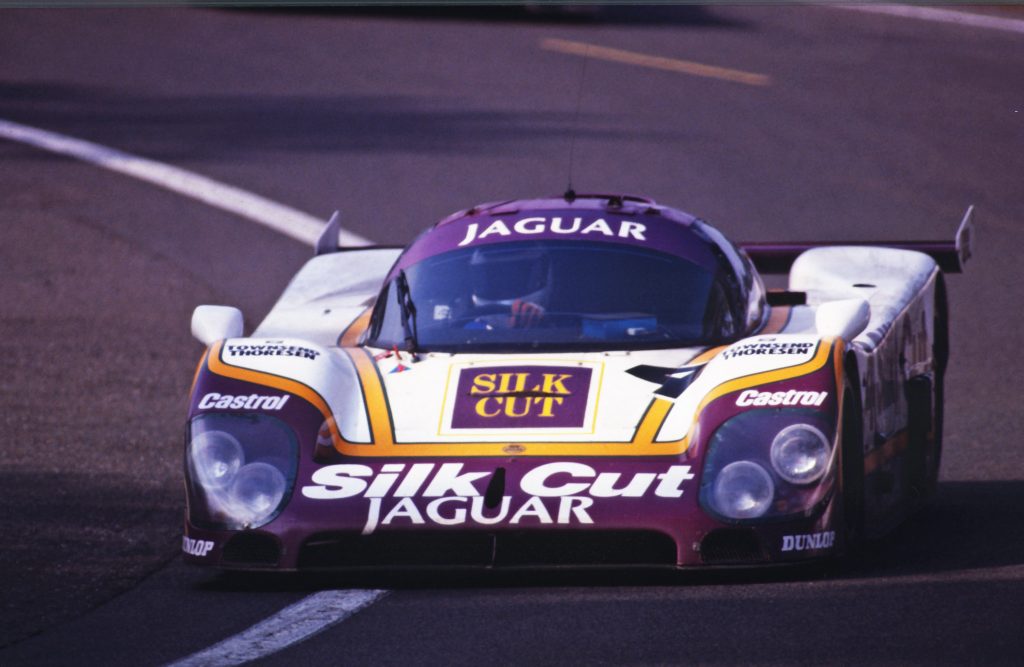
Film boxes from a week later showed images of the deep water expedition I’d agreed to and almost forgotten about; and once I was into that, some very odd looking creatures began to show up. I kept going, and eventually arrived at pictures of robots in Japan, indicating that I had survived the Atlantic tsunami of death and moved on. The motor racing had been all speed and noise; the robots a rapid ‘smash and grab’ trip around the world with not a second to spare between flights — a hire car left outside a LAX airport terminal comes to mind — in was abandoned it haste with the doors left open to make a flight, and for all I know might still be there. The deep sea expedition had been a moment of calm sandwiched between two projects involving breakneck speed; and when I returned from the ocean trip, my wife said she had never seen me so relaxed, but I don’t recall feeling any different. Whatever the case, visually the results seemed encouraging, although I was just holding transparencies up to light from a window. Then I started scanning the oddities, and began to realise that some were even more unusual than I had remembered.
The trip didn’t start well. I drove to Barry in South Wales where RRS Discovery was docked and needed to be there two days before most of the others to get my gear on board. This left me at a loose end in Barry for longer than I would have liked — my grandfather’s birth certificate indicates that he was born there — odd because he was Scottish. I’d never been there myself and knew nothing about the place, but immediately found it rather depressing.
With time to sit around I began to wonder what I’d forgotten. You can’t be part of a multi-million pound ocean expedition only to discover that you’ve forgotten your tubes of sealant and can’t build the tanks… and there’s no point in looking to scientists for help, they’ll have is a pair of tweezers, a microscope, a notebook and sometimes a pencil — it occurred to me that specialist film-makers required far too much stuff. Any small slip up can put you completely out of your depth even when there is a boat between you and the water. Every project throws up different problems and things quickly turn to bilge if you’re not prepared, especially when something needs fixing. A more positive spin is that expeditions provide opportunities for problem solving — the alternative is panic, but it serves no purpose. Both Scott and Shackleton undertook expeditions on the first RRS Discovery… and did they panic? I don’t think so… although on a later expedition one of them freeze to death and remains buried somewhere beneath the Antarctic snow.
Boarding early, I needed to stay out of the way of everything else coming on board and soon discovered a local bookshop and started reading in my cabin. Removed from my usual state of hyperactivity I became one of the unbusiest people on the Planet and that didn’t suit me… There is that strange feeling you get when you push your chair back and just catch yourself before going over — well, I feel like that most of the time, and sitting in a chair that was screwed to the floor didn’t make me any calmer.
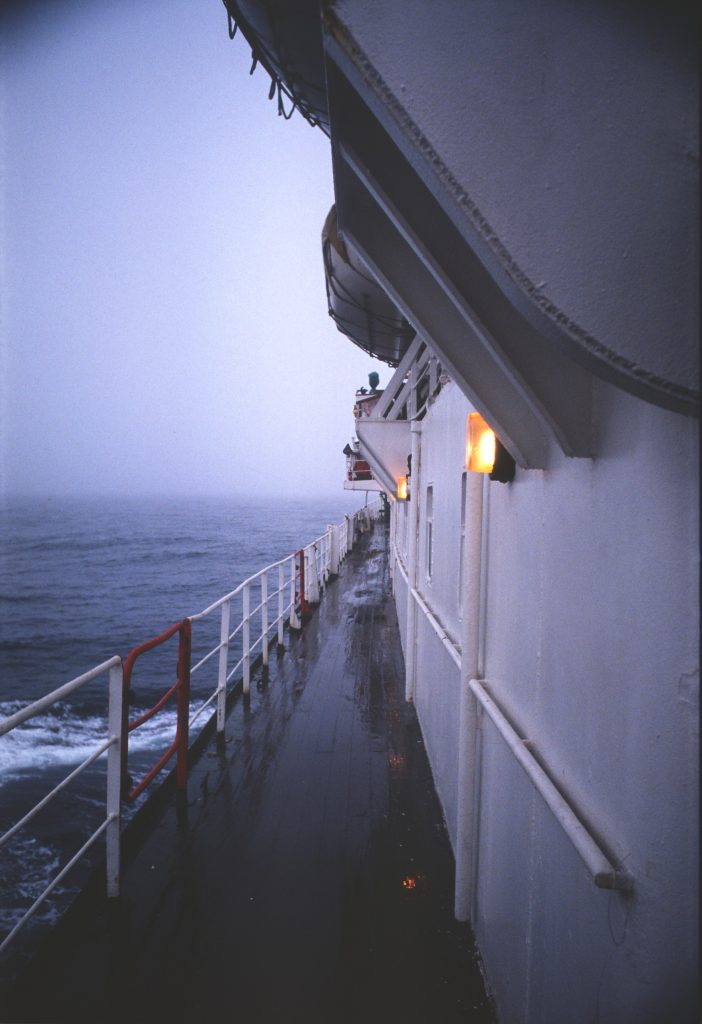
After a couple of days we were underway, but getting to distant places on a boat takes time. Passing between the Azores and Portugal threw up several bronco bucking moments and all three of the usual sea conditions prevailed — apart from actually sinking. There was standing upright and moving about comfortably; then staggering from side to side and pitching forward whilst trying to maintain some semblance of dignity; and finally, being thrown about like a bowling ball until you squeezed yourself into a tight corner.
Fortunately, RRS Discovery was big and most of the time I could work with sheets of glass without mortal danger, but in rough weather, tanks filled with sea water, surrounded by electric lights and cables, pitching about on a metal structure did not meet the usual standards of health and safety. The upside was that I had plenty of sailing time to get prepared. When it was too rough I’d go up on deck and watch the sea go by. Pretty soon it was clear who had the better end of the stick, as I watched the crew hammering away at rust, painting the boat inch by inch as the days went by.
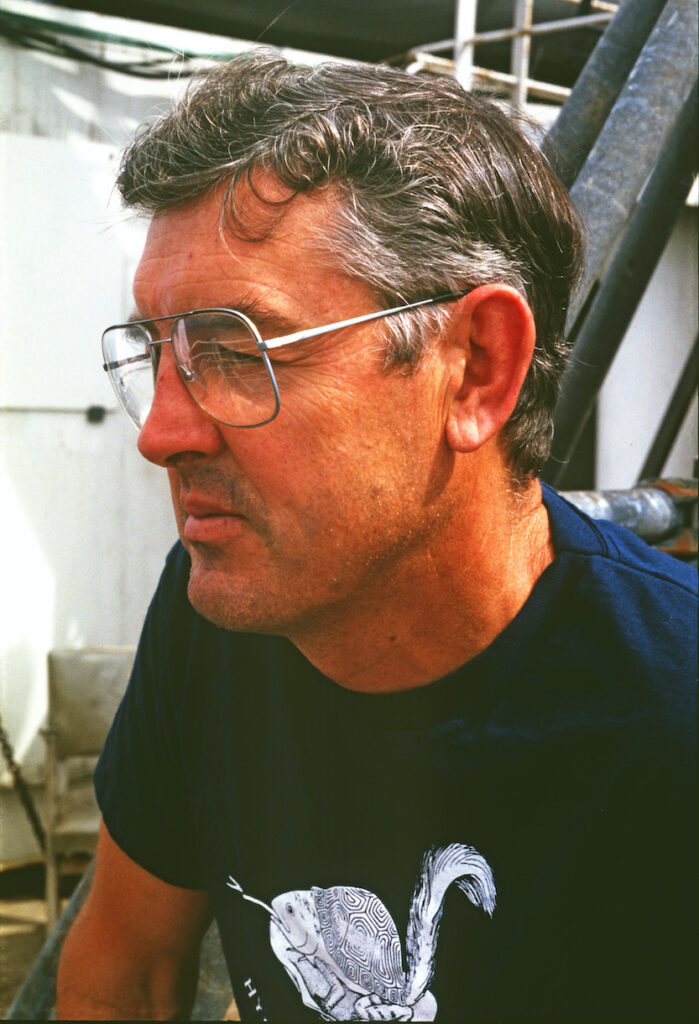
The best part of the trip was the scientists. I felt comfortable with them because few seemed bothered by the everyday things that plague most people; each was preoccupied with the study of some obscure creature that nobody else knew anything about, and none of them tried to show me pictures of their children, or asked if I played golf.
The worst part was the waiting… On reaching the West Coast of Africa the deep sea trawling began and it went on for hours. Nets were craned off the back of the boat and let out into deep water; then, having been dragged for some distance were reeled back in and half the day had gone by. To make collection more efficient, each deep sea trawl combined several nets of different gauges, each relating to the size of creatures to be captured and the depth at which this might best be achieved.
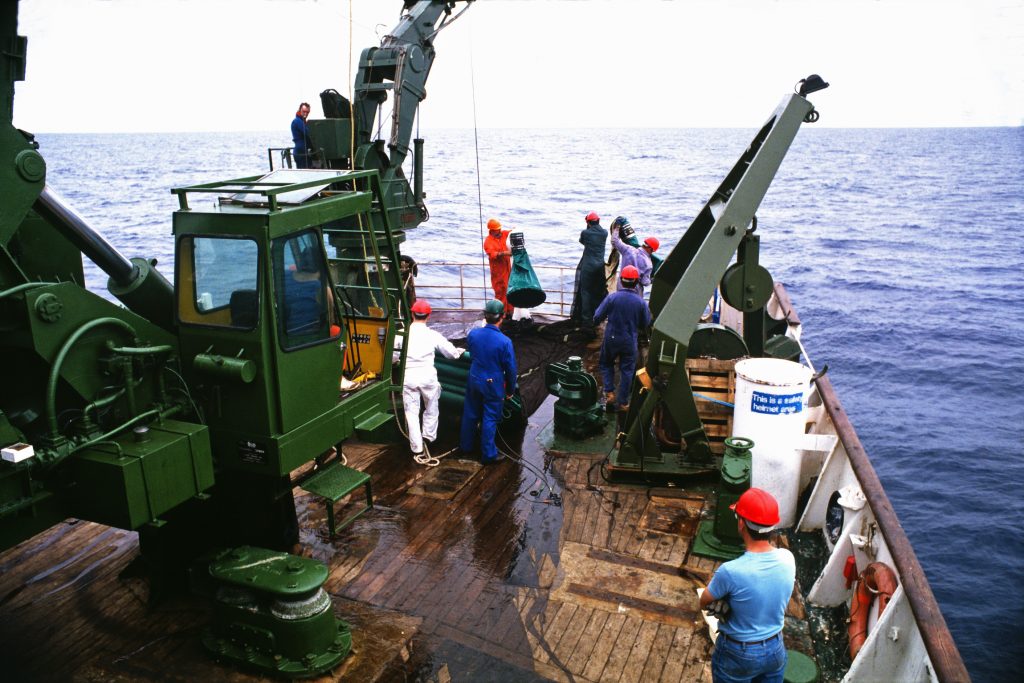
After the trawl the catch was laid out on a big table, and everybody held back until I’d made my selection. Many scientists had waited a long time for this opportunity and I could feel the tension mounting behind me, but I had priority, because I needed to get specimens back into seawater as soon as possible. I selected the least damaged and anything that was still alive was a bonus. When making a movie the clue is in the name; without movement the audience might just as well go look at a picture book.
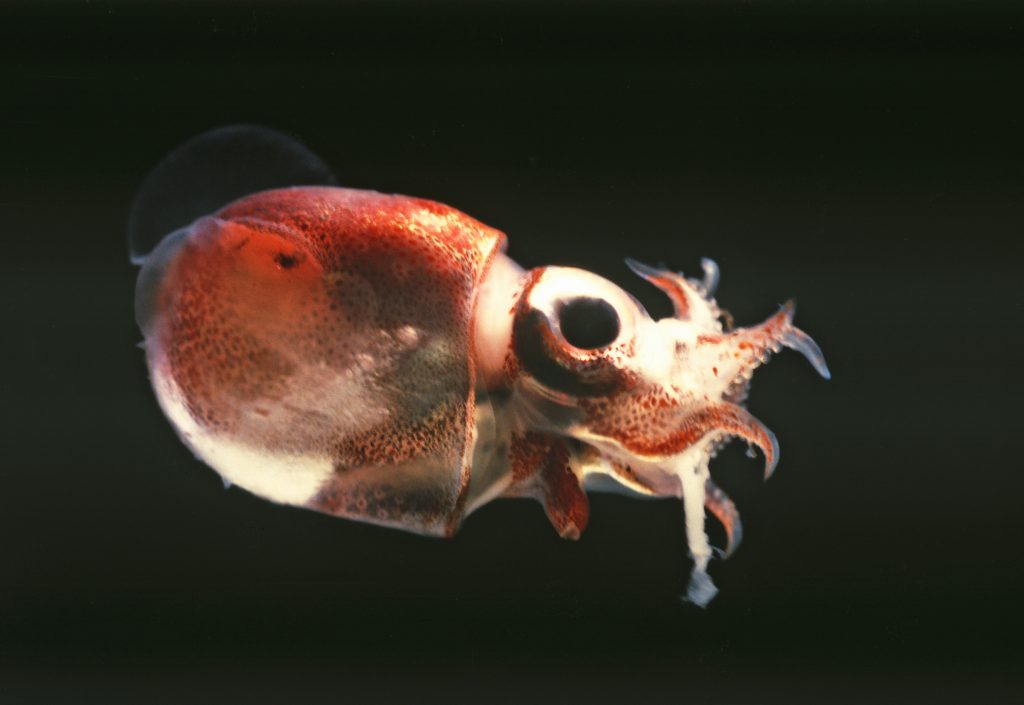
There were some rare fish on the slab, some new to science, but there are only so many weird creatures you can cram into a 50 minute documentary. The brief was clear — I was to seek out ‘the big teeth, the bad and the ugly’ — the sort of thing people wanted to see on television at 7.30 on a Sunday evening as an alternative to the ‘God Slot’, and nobody was going to get excited about a fish that looked like a sprat, even if it had never been seen before; what audiences really wanted was something that wouldn’t look out of place in a horror film.
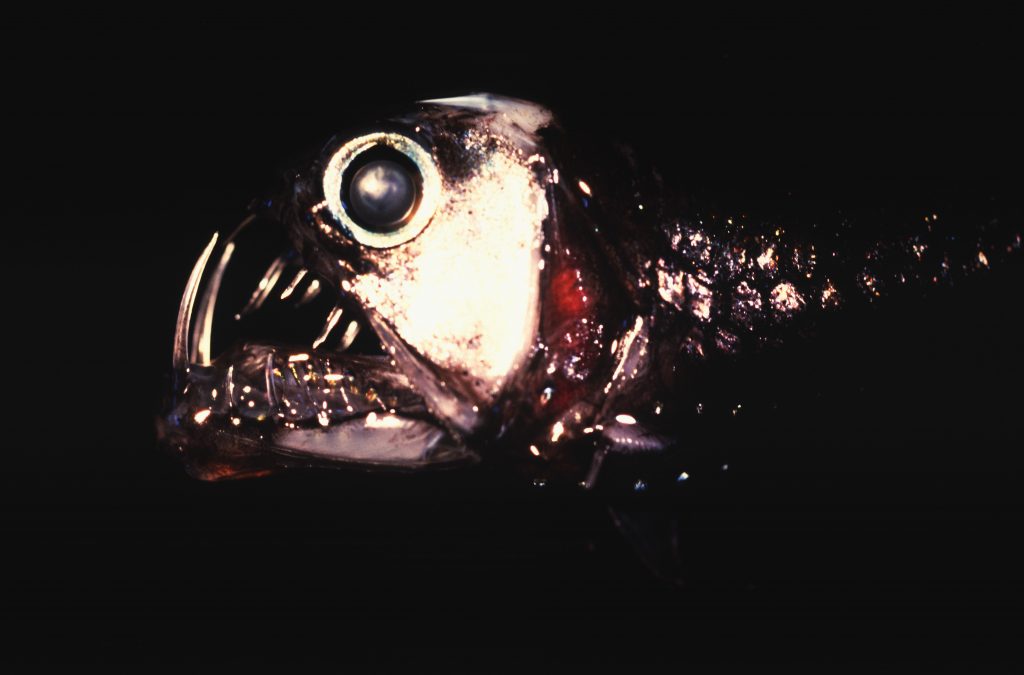
Scientist are naturally interested in the limits of vertebrate existence, but the attrition rate amongst the animals coming up was high. On the up side we were catching an infinitesimally small sample of what was down there. Quite literally a drop in the ocean compared with the many ships that were fishing commercially – not that anybody would be eating any of the monsters we were dragging up. However, nothing compares to the ugliness of human behaviour. Too often we consider fish from the sea an unlimited resource, and rarely consider the sustainability of Ocean ecosystems. All we require is for the fish to keep swimming into our nets, with very little concern for the many other species that rely on the same resources as we do. It is a shocking state of affairs, and I have no doubt that scientific expeditions remain our best option to gaining knowledge in the likely event that our oceans become irreparably damaged.
As I had feared, most of the deep sea creatures made poor subjects. Having been dragged from the depths over a period of several hours, many of them were battered… and I don’t mean with chips… and most were not pretty to start with. The first thing these stressed out fish did was to shed an outer layer of epithelial mucous and my filtering system could not keep pace with it.
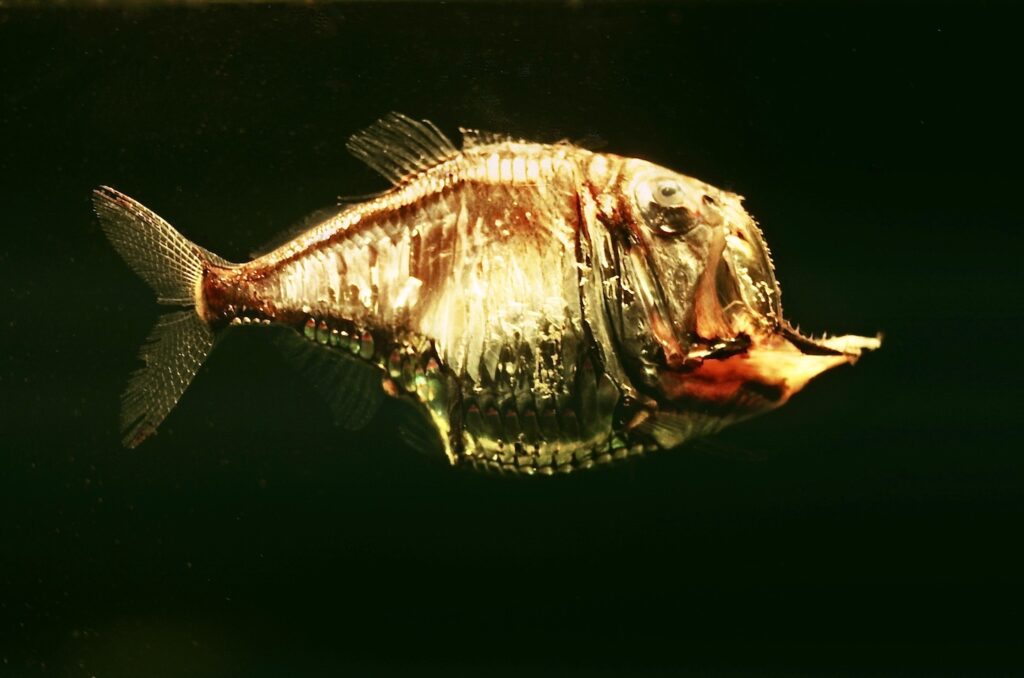
I kept a look out for signs of life, but there was very little. With the extreme changes in pressure, most of the fish had blown their swim bladders, and given the chance to swim they no longer remained upright… It was depressing but entirely predictable.
Keeping fish on an even keel was a major problem, and I ended up supporting a great many in a grove between two gently sloping sheets of glass, these set a little back from the front of the tank. A few fish waggled their fins and even moved forward, but few did so convincingly. I began panning across them in the hope of giving the impression that they were making their way forward, but it was a far cry from reality. Nevertheless, through the view-finder, some fish were coming to life more convincingly than Frankenstein’s monster. The results were contrived — it wasn’t cricket… but it was television.
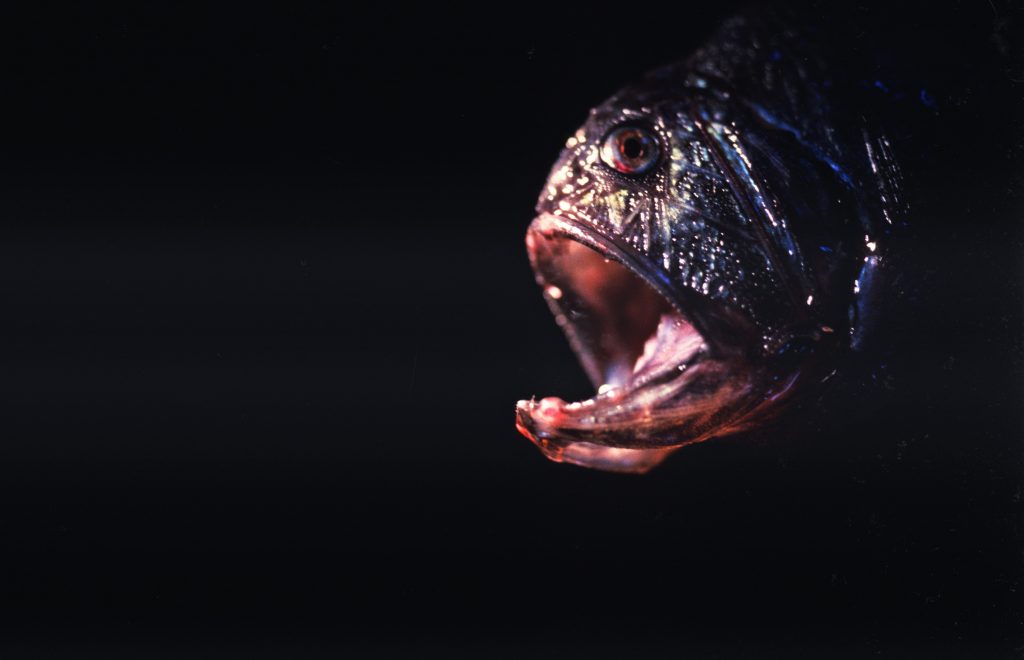
Sadly, no fish ever recovered enough to be returned to the sea; but even to suggest such a thing is missing the point. Almost everything brought up from deep water had scientific value. However, never before had I been required to bring life back to the dead and the dying. I had become a ghoulish mortician, making unfortunate fish presentable for a viewing audience, although this didn’t include their relatives, as most of them were lying around on the same slab that made up our ‘fish market of the macabre’.
There was no possibility of demonstrating behaviour; all I could do was feature fish that were otherwise not easily observed. In a submersible it would be impossible to provide an appropriate sense of drama using front lighting; although some might consider any form artificial illumination inappropriate, and if that was the case, then none of these unusual creatures would feature in our film.
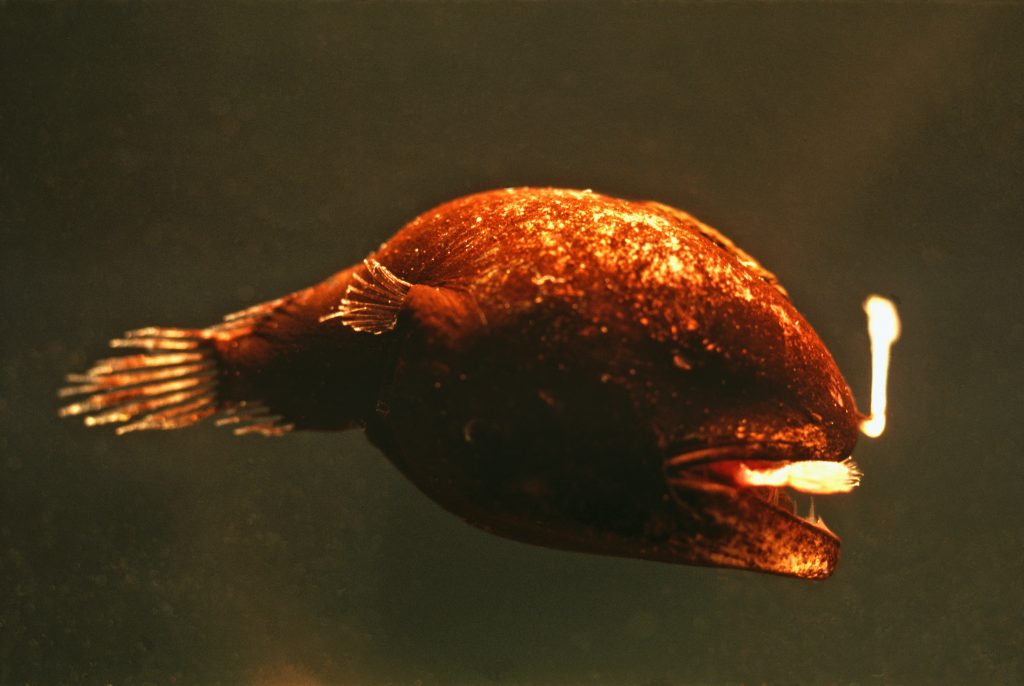
There is a lot of intermittent bioluminescent flashing in the depths, mostly too brief and weak to achieve useful images. Imagine though, if it were possible to utilize the bioluminescent flashes — the results might prove quite dramatic. I envisioned creating short flashes of blue light in keeping with the bursts from photophores carried by many deep sea creatures, and thereby briefly reveal the fearful looking creature I was filming. But flashes of light on television usually carry a health warning and I knew the BBC wouldn’t use any of it. ‘Give me something different’, a producer might say, even when they weren’t quite sure what that might be. Often I did… but nothing I attempted was ever ‘BBC enough’ to get used.
Some days I was lucky to get any pictures at all . Working in an open space on the ship, ambient light was coming in from a variety of directions, and it was impossible to achieve the necessary dark backgrounds; so when catch times allowed, I filmed through the night.
In the tanks my nightmare didn’t let up. Apart from slime in the water, there was the problem of air bubbles forming on the glass. In rough weather the boat rolled and pitched, and when it didn’t, there was still the throbbing engine vibrating up through the tripod’s legs. Sorting each problem out in turn was becoming more complicated than some of the science going on elsewhere on the ship. It was a painstaking and sometimes impossible process. I imagined going down in a submersible to film healthy fish; then remembered I’d been told that changes in pressure cause people to break wind more in deep water vessels, but as they don’t go into that sort if thing in top notch documentaries, I didn’t know. On the up side I could use the idea to convince myself that my present method of sorting impossible problems was the more agreeable option; and having finally lit my subjects to best advantage I began to notice that once you are past the weirdness of appearance, and the mouths full of teeth, many fish were in their own way, oddly beautiful.
One fish appeared to have bite marks near the tail. I had seen something similar as a child when fishing with my father. He was reeling in a trout when the line suddenly jerked; and on bringing the fish in, we discovered that a chunk had been taken out in front of the tail by a predatory pike. The marks on the deep sea fish looked like a similar injury, but as they existed on both the lower and upper body, there was something more complex going on; and closer examination (which means looking properly!) revealed these to be organs of bioluminescence.
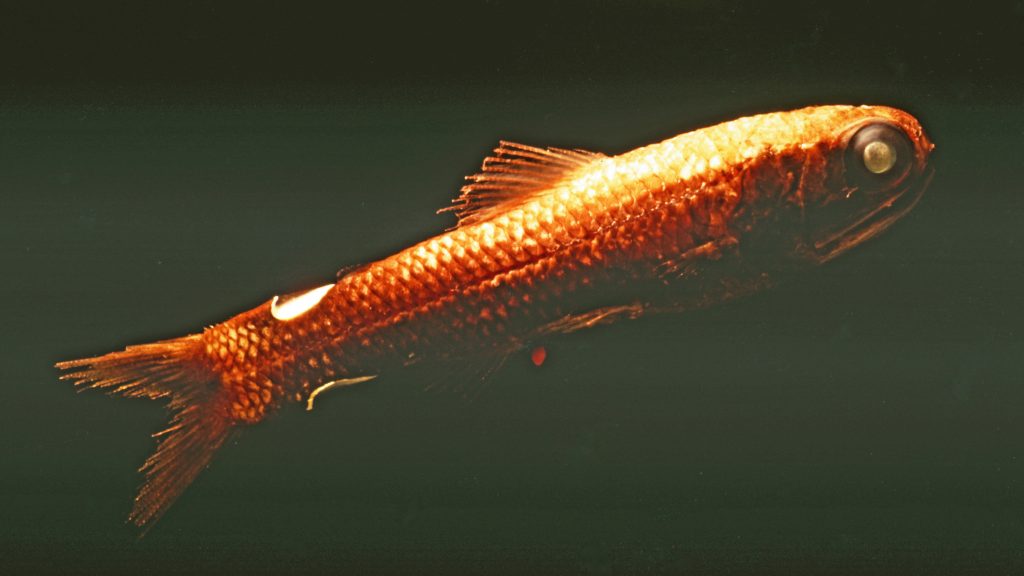
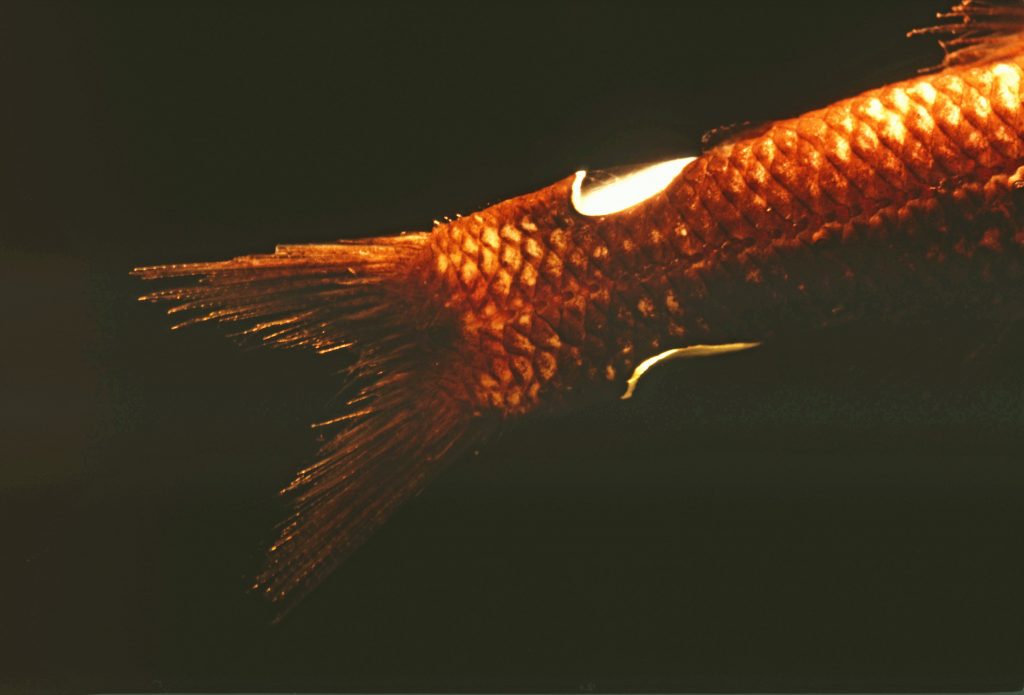
On board were some exceptional scientists; one of them Mike Land, who was a world expert on how differently eyes are adapted to see throughout the animal kingdom. His main interest on this trip was to study not a fish, but the crustacean amphipod Phronima, which is an altogether very odd creature from mid-ocean depths, and not so a tiny creature as to require a microscope to film. The females of the species did something very interesting; they lived in a transparent barrels constructed from the spare parts of a gelatinous salp.
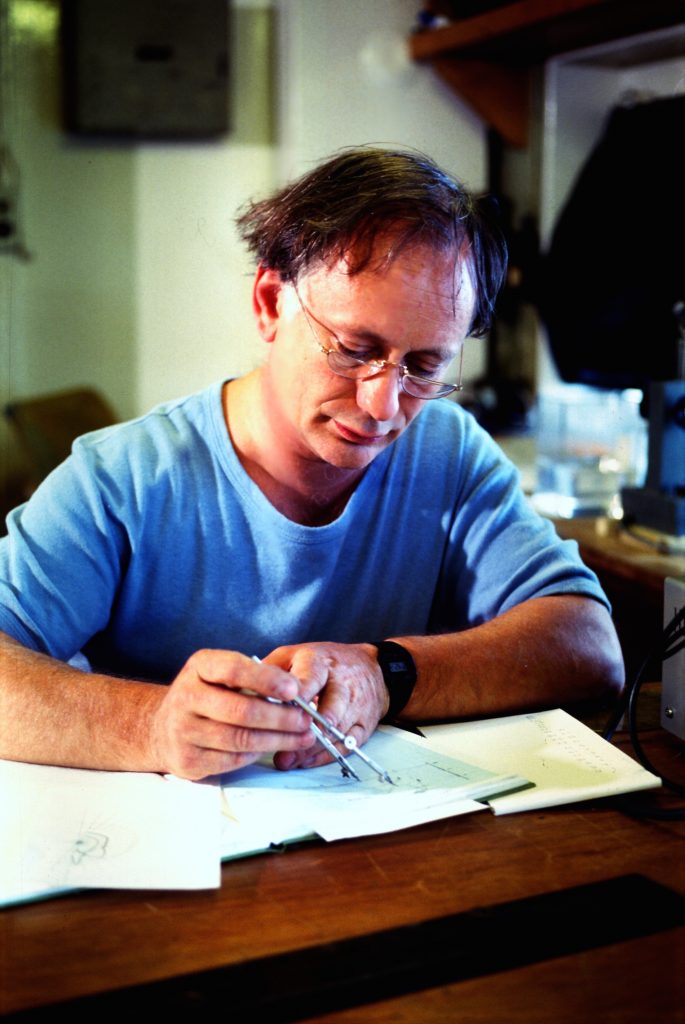
Initially I thought Phronima was akin to a cartoon character, but soon discovered that when it comes to feeding and looking after young, the females really do mean business, and there was nothing remotely amusing about their behaviour. If it is possible to describe a deep sea hyperiid amphipod as ingenious, then the females of this species would certainly be that. They attack a salp and hollow out the gelatinous shell of their prey to make a barrel in which to lay eggs, then rear their young by utilising the fresh food that flows in as they propel the transparent barrel through the pelagic zones of the ocean; something that puts them right up there in the sci-fi stakes with the many other grotesques I was attempting to film.
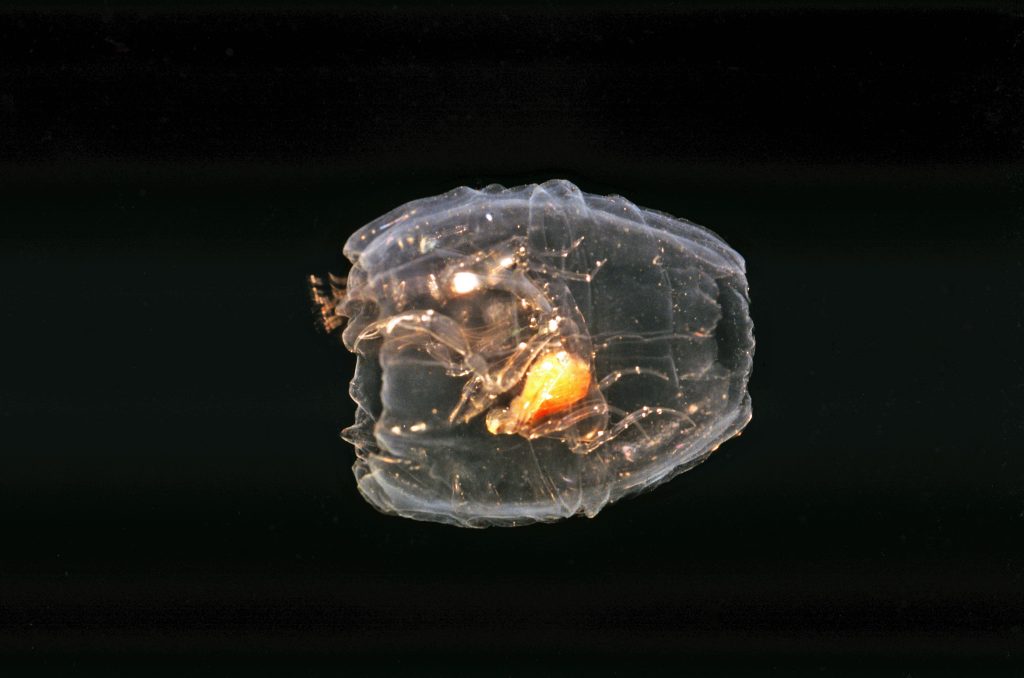
This female Phronima scooting along in her barrel seemed unphased by events. It was the only creature brought up from the depths that remained alive enough to continue doing its thing. I worked with several and felt duty bound to throw them back into the sea after filming, although I doubted that any would ever make it back to the level where they belonged. However, if any did return successfully to their deep sea homes, I imagined them telling other Phronima stories of divine intervention, informing their audience that if they ever did have a near death experience, they should on no account swim towards the light.
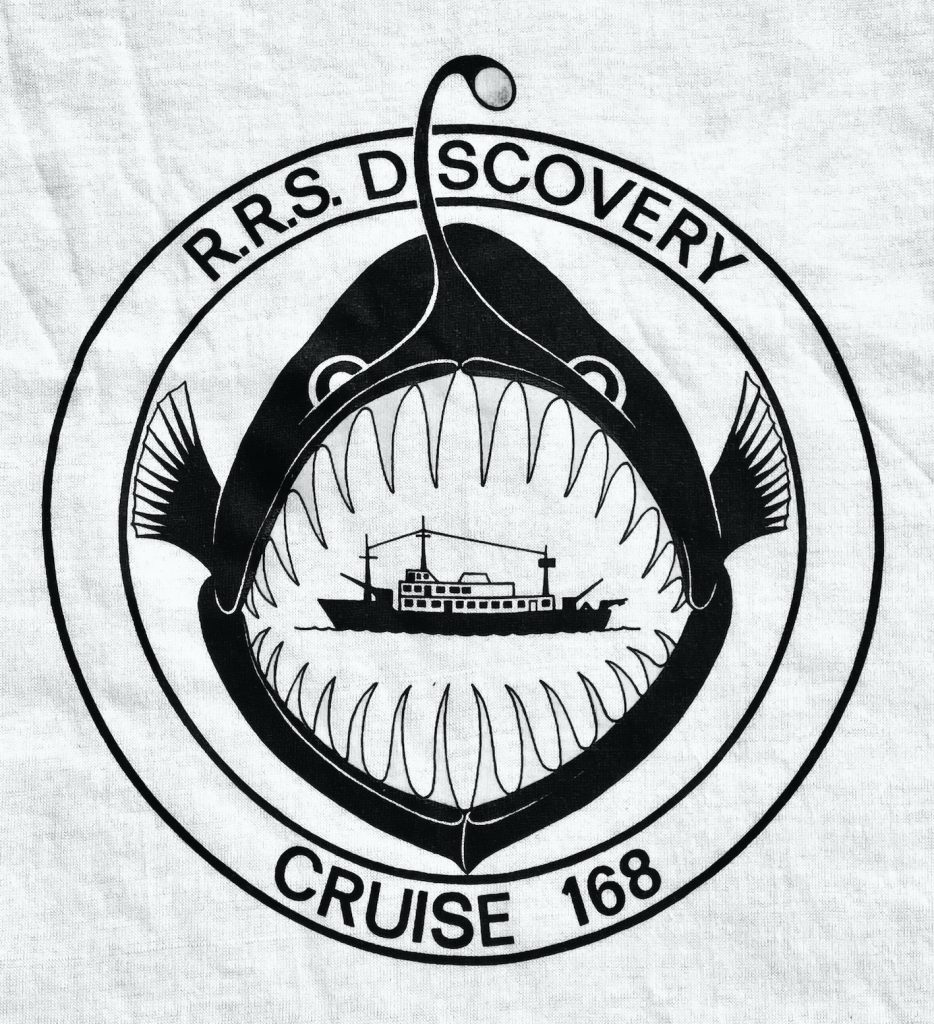
It seems trivial to mention the T-shirt design competition, but I will. I’m against art and photography competitions because I don’t think it make sense to judge artistic endeavour; but this was a competition I really wanted to win. You just have to find the right trigger to make a human competitive, and in my case it was a big fish eating a very big boat.
If I’m honest the only fish I could claim to know anything about before the trip was the anglerfish: the specimens I filmed were quite spectacular, despite suffering ill health followed by a real death experience before crossing over into preservative, which is probably the fish equivalent of eternity.
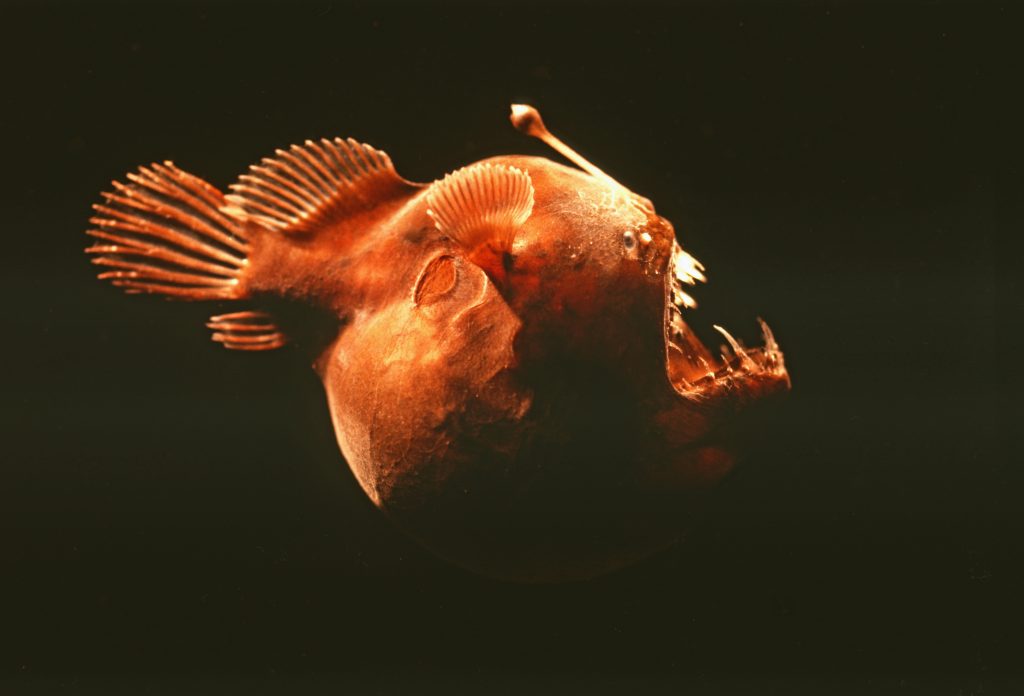
The deep sea anglers are perhaps best known for their bioluminescent lures and it is likely these fish don’t see too well. Because natural light doesn’t get down to them, they generally rely on vibrations to locate their prey, and once it is close enough catch it by surprise. The fish simply opens a very large mouth and it is a case of ‘now you see it, now you don’t’ as the unsuspecting prey is sucked into this wonderfully adapted eating machine. I of course witnessed no such thing, and most of the information that has been gleaned on the subject is from anglerfish species that live in shallower water.
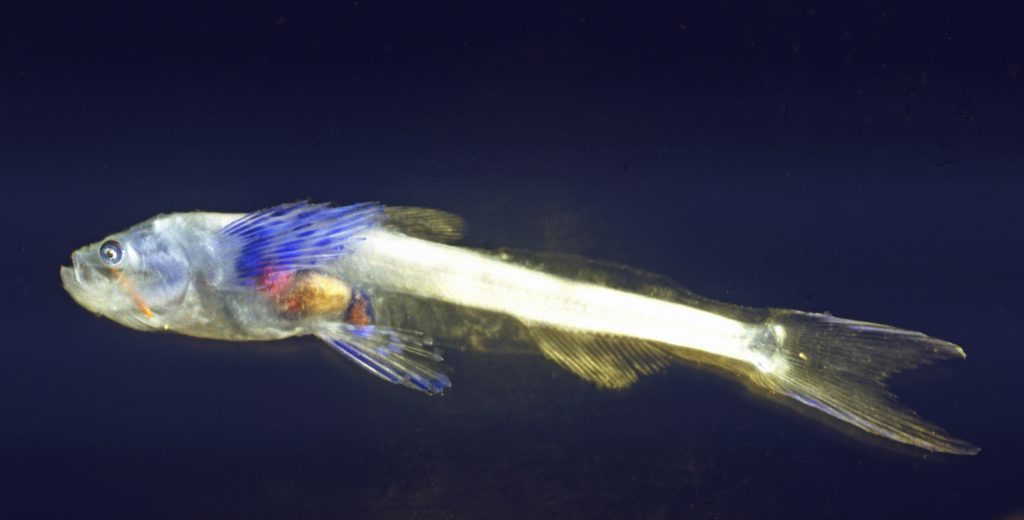
Some of the fish I photographed were not just flashy with bioluminescence, they were also colourful. Indeed, some had such reflective surfaces they gleamed with a silver intensity in my lights, which suggests there might be more bioluminescent activity than we are presently aware of; otherwise, why the need for colour and reflective surfaces. We still know very little about the strange creatures of the deep, but as our knowledge progresses, my experiences will likely become little more than of historical interest; although I do have enough sense to realise that despite all of the difficulties, this trip really was the opportunity of a lifetime.
In memory of Mike Land FRS 1942 — 2020, who had a unique way of seeing what other organisms saw.
